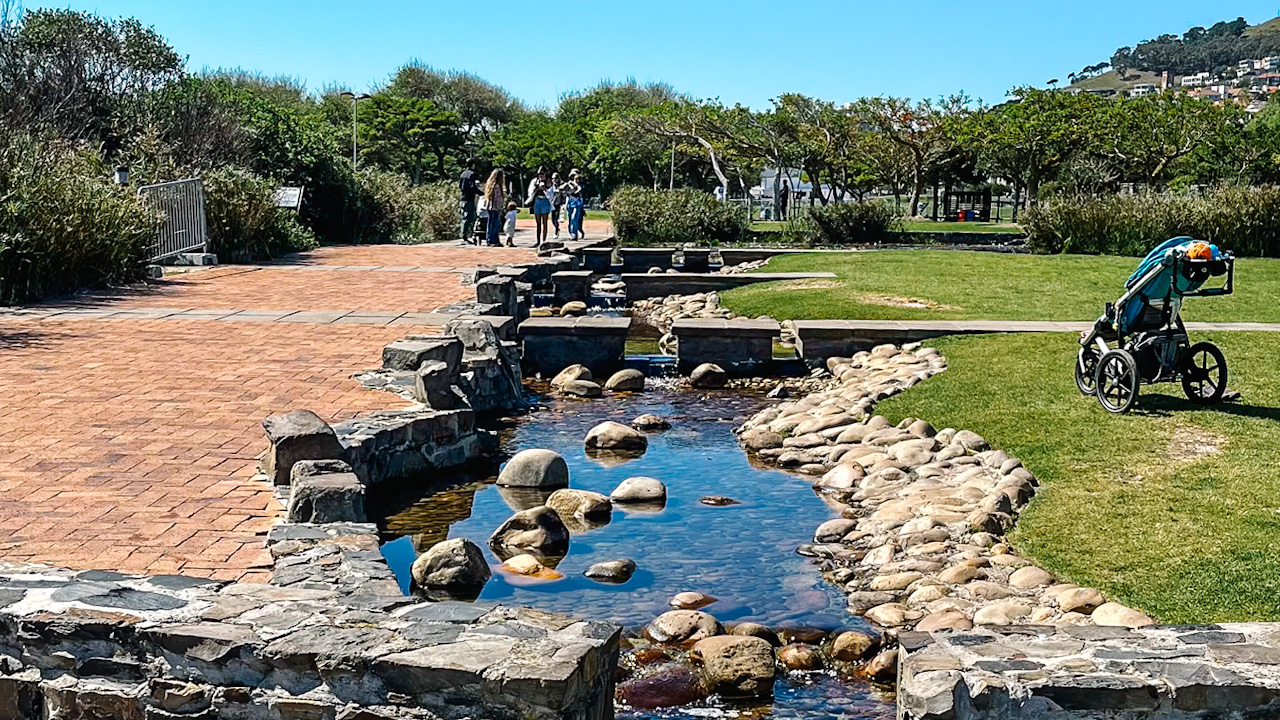Cape Town – Water Augmentation Plan
Cape Town’s disaster plan for the 2018 water crisis included data-driven strategies to manage water supply, identify vulnerable areas, and establish water distribution points, ensuring a targeted and effective response to the drought.1
Case study
| City | Cape Town – 2024 Special Mention |
| Type | Disaster risk management |
| Location | Citywide |
 Water management in Cape Town © Urban Redevelopment Authority Singapore
Water management in Cape Town © Urban Redevelopment Authority Singapore
Key issues
South Africa faces a severe water crisis, relying heavily on rainwater for urban, industrial, and irrigation needs. With an average annual rainfall of only 495mm, rainwater levels are unpredictable, unevenly distributed, and decreasing due to global warming. Cape Town experienced its most severe drought on record from 2015 to 2018, with dam levels dropping substantially – Theewaterskloof Dam, the larges dam, held only 13 percent of its capacity in January 2018.
If the water supply had been turned off, the consequences would have been catastrophic, including a significant risk of water and sanitation-related diseases, infrastructure collapse, and job losses – approximately 300,000 jobs in agriculture and tens of thousands more in the service sector. Cape Town implemented water conservation measures, but the drought highlighted the need for more effective disaster planning and management. The severity of the drought threatened public health, economy, and food security, necessitating urgent action to address the water crisis.
Objectives
The city’s disaster plan aimed to monitor dam levels and water usage, reduce demand, implement water-saving measures, and develop new supplies. The plan informed the Water Strategy and Programme, seeking to increase reliability, prevent future restrictions, and protect public health, economy, and food security, while addressing the impacts of extreme low rainfall and drought.
Key strategies
Cape Town’s Disaster Risk Management department developed a corporate disaster planning exercise to address its lack of hazard plans for slow-onset events like droughts. This aligned with the city’s strategic objectives to be a safe and well-run city, leading to the Water Augmentation Plan and Critical Water Shortages Disaster Plan (‘Disaster Plan’). These plans enabled the city to manage its operational responses to water shortages effectively.
The city implemented its Water Augmentation Plan to diversify water supply from surface water to groundwater and other sources. The Disaster Plan took a cautious approach, assuming little additional supply measures until the next rainy season and prepared for a worst-case scenario. The city set out principles to inform its response, including minimising impact on human life, continuing critical services, prioritising vulnerable communities, and protecting infrastructure.
The city activated the Disaster Plan in three phases: Preservation Restrictions (implementing water restrictions, communication campaigns, and punitive tariffs), Disaster Restrictions (enforcing a daily water allowance of 25 litres per person), and Full-scale Disaster Implementation (executing emergency water distribution and evacuation). Through active information-sharing and transparency, the city kept its inhabitants updated through an open-source format, published water-saving tips, and updated a water dashboard weekly.
Impacts
Cape Town’s Disaster Plan relied heavily on integrated, up-to-date, scale-appropriate data, critical in designing the response to the drought. The city developed its own Social Vulnerability Index (SVI) and Economic Nodes Index (ENI) to inform the phased shut-down of the water reticulation network and establish Points of Distribution (PODs) for daily water rations. This data-driven approach enhanced predictability and accountability, allowing for a consistent approach and messaging when ‘Day Zero’ (date when water supply would be cut off to ensure rationing during drought) seemed imminent.
The city collaborated with partners to apply behavioural insights to its communication of data. Consumption heat maps with resolution down to erf numbers were published, allowing residents to track their performance relative to consumption targets and their neighbours. Water distribution locations were determined based on social, technical, and economic considerations, including population density, land ownership, and safety.
The SVI and ENI were developed to determine the sequence for cutting off water supply. The SVI used 2011 national census data, updated with proxy data and City officials’ knowledge of communities. The ENI comprised two components: economic importance and vulnerability to water supply reductions. The city’s data-driven approach ensured a more effective and targeted response to the drought, and its collaboration with partners enhanced the effectiveness of its communication strategy. O
-
The information in this case study is correct as of 2023. ↩

